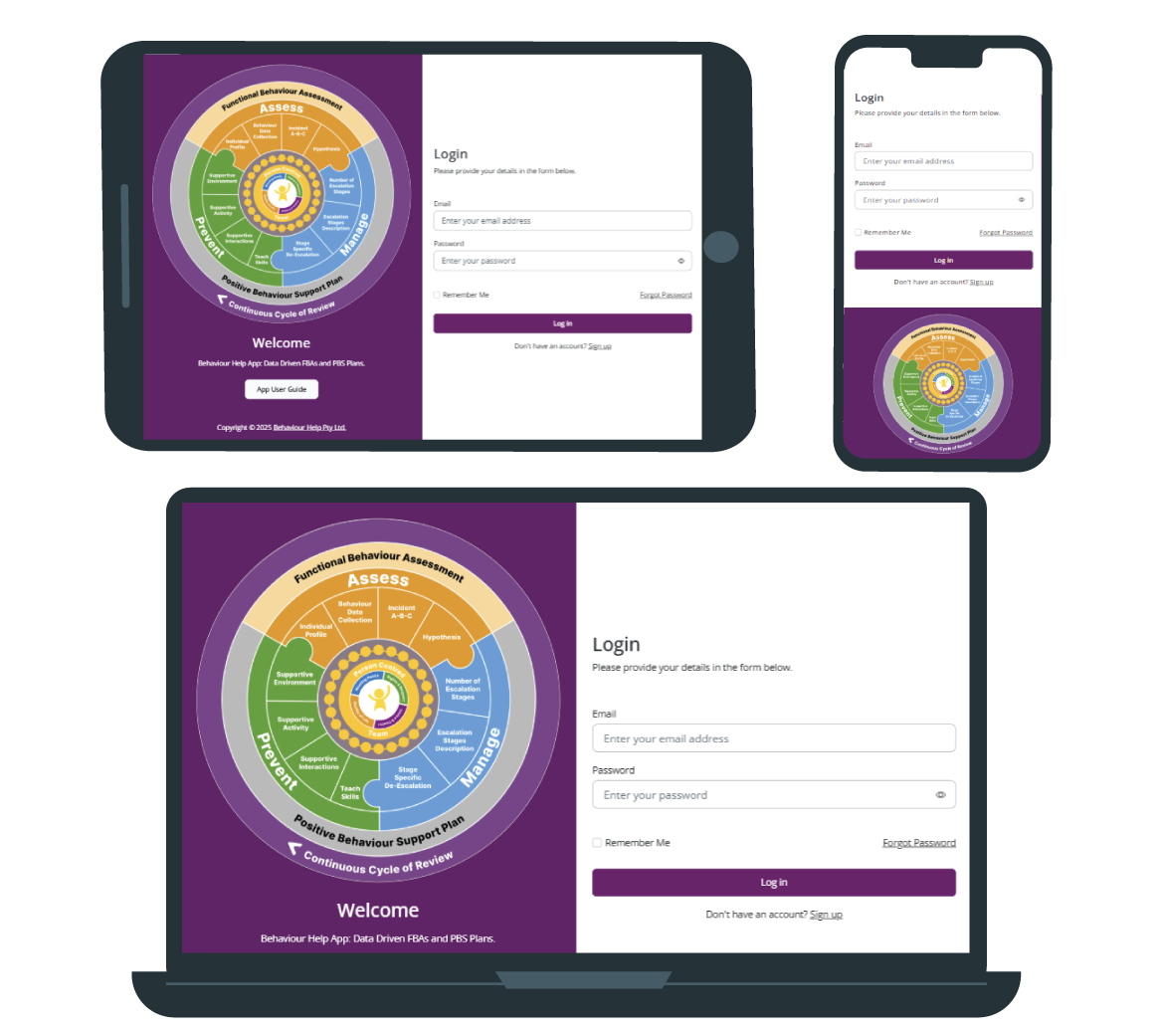When our young people are learning in the classroom, disruptive behaviours of concern affects everyone. Learning outcomes suffer in the short and longterm when teaching is interrupted by disruptive classroom behaviour.
There are many reasons why a student's behaviour may become disruptive and escalate and these underlying causes include mental health.
With diagnosis of Autism and ADHD on the rise, additional support is needed for addressing behaviours of concern on a day to day basis in education so we can limit classroom disruptions and promote positive learning outcomes for all.
We have developed a tool that is effective at managing behaviours in partnership with teaching staff, family members and other students. It begins by recording the observed behaviour, in what's known as a Functional Behaviour Assessment, and it ends with practical guidelines for managing the challenging behaviours leading to meaningful reductions in disruptive behaviour in the classroom.
Let's dive in and learn more about behaviours of concern and the underlying causes of disruptive student conduct, but first, my name is Dolly Bhargava and I support children, adolescents, and adults with emotional and behavioural difficulties (EBD).
My work has focused on providing support across a variety of settings, including family homes, childcare centres, schools, respite care, post-school options, employment services, and corrective services for more than 25 years.
I am a practicing behaviour therapist, author, the founder of behaviourhelp.com and more recently the Behaviour Help App.

Introducting...The Behaviour Help App
Your All-in-One AI Tool for FBAs and PBS plans
You’re doing important work. That’s why we built the Behaviour Help App — to make it easier to track behaviour trends, identify patterns, and develop meaningful, person-centred strategies.
Disruptive Behaviour Warning Signs
Most behaviours of concern have warning signs or 'antecedents'. The student involved may have come to school feeling fine but through a combination of environmental factors, mental illness or misunderstood social cues the student might start to dysregulate and become at risk of displaying challenging behaviours.
For teachers reading, it is probably quite normal to experience stress in the classroom and normal to spend time addressing the disruptive behaviour.
Even seemingly minor disruptions can be problematic causing teaching staff to spend their teaching hours managing disruptions when they should be supporting students with learning but it is possible to address the disruptive behaviour in a systematic way and it all starts by noticing the antecedents.

Functional Behaviour Assessments
Functional behaviour Assessment (FBA) is an evidence-based and systematic assessment process of collecting and analysing information from various sources that helps to gain insights into the factors contributing the behaviour and identify why a behaviour is occurring i.e., the “function/s” of the behaviour.
Specifically in regards to the FBA the Behaviour Help App guides you step by step through the following:
-
Individual’s profile: Gather information about the individual to create a comprehensive picture of the individual, their context and systems of support.
-
Behaviour data collection forms: The app allows multiple team members to record by inputting measurable details (e.g. frequency, intensity, duration) about the behaviours of concern by observing the individual in different settings. The app then collates the metric data, analyses and captures patterns.
-
A-B-C analysis: The app allows multiple team members to systematically input incident details by recording the antecedents (what preceded the behaviour and the environment including where the behaviour occurred ), behaviours (describing the observable actions as they occurred) and the consequences (what happened after the behaviour). The app then collates all the incidents into an incident register system for easy analysis.
-
Hypothesis: By reflecting on both the qualitative and quantitative data the most likely purpose (i.e., function) that the behaviour of concern serves for the individual and what reinforces that behaviour to occur again can be determined.
The Behaviour Help app then generates a downloadable functional behaviour assessment report thatcan be printed or saved as a PDF to be shared with the individual's support team.
Examples of Behaviours of Concern
In the classroom, behaviours of concern can take many forms, from calling out, interrupting, or refusing instructions, to more disruptive actions like leaving the room without permission, throwing objects, or using verbal or physical aggression.
Some students may display self-injurious behaviour, withdraw completely, engage in teasing or mocking others, or produce repetitive noises that disrupt the learning environment. While some behaviours are overt and others more subtle, all can impact learning and signal underlying needs such as anxiety, sensory overload, trauma, or difficulties with communication.
Recognising and responding to these behaviours effectively starts with understanding their root causes—something the Behaviour Help App is designed to support.
Here are several classroom-based examples of behaviours of concern, ranging from subtle to more intense, that teachers may encounter. Each one reflects a potential disruption to learning and may have underlying causes that the Behaviour Help App is designed to help identify and manage:
Calling Out or Interrupting
A student repeatedly speaks out of turn, talks over the teacher, or interrupts others. This may seem minor but can escalate and become habitual, undermining the flow of the lesson and frustrating peers. This is often referred to as attention seeking.
Refusing to Follow Instructions
The student ignores direct requests or instructions, either by pretending not to hear, openly refusing, or doing something else instead. This may stem from anxiety, demand avoidance, or unmet sensory needs.
Leaving the Seat or Classroom Without Permission
A child may get up and wander around the room or even leave without warning. This may be an attempt to escape an overwhelming task, avoid peer interactions, or gain sensory input.
Throwing Objects
Pencils, books, or even chairs may be thrown, often suddenly and without warning. This can frighten others and disrupt learning, and may be a reaction to frustration, overstimulation, or a communication breakdown.
Verbal Aggression
Shouting, using offensive language, or making threats toward staff or peers. This often occurs when the student feels misunderstood or overwhelmed, and it may be a cry for help or an attempt to regain control.
Physical Aggression
Hitting, kicking, pushing, or property destruction. These behaviours can be rare but extremely distressing when they occur. Often, they are responses to internal dysregulation or external triggers.
Self-Injurious Behaviour (Self Harm)
Banging the head on the table, biting hands, or scratching arms may be witnessed by teachers. These behaviours require urgent attention and a sensitive, non-judgemental approach to uncover the triggers.
Withdrawing or Shutting Down
While less disruptive to the group, some students may shut down completely—refusing to speak, putting their head on the desk, or staring into space. This behaviour may indicate anxiety, trauma, low energy or autistic burnout and can be just as concerning.
Mocking or Teasing Others
Engaging in subtle bullying, sarcasm, or singling out peers. This behaviour may mask insecurity, or it may be an attempt to gain peer approval. Left unaddressed, it can lead to a toxic classroom environment.
Repetitive or Distracting Noises
Tapping, humming, or making vocalisations that are not related to the task. Sometimes these are self-regulatory behaviours (stimming), and other times they reflect boredom or defiance.

Positive Behaviour, Positive Learning Outcomes
As a health professional I understand the complex role of mental health in overall well being, particularly for young people. Schools play a crucial role in child development delivering not only the practical skills needed for life but essential role modelling for social interactions and learning to cope with the expectations of the world.
When disruptive behaviour threatens these outcomes, it threatens the life chances, physical and mental wellbeing of the individual and those around them in the classroom. Left unaddressed disruptive behaviours can lead to social isolation with an elevated risk of depression and violence later in life.
The Behaviour Help app is being used by schools in class across Australia (and beyond) as a tool to manage and support individuals in reducing classroom disruptions.
Building stronger relationships between the student, their teachers, parents and other stake holders to assess, manage and prevent behaviours of concern.
The Behaviour Help App can help implement practical solutions to manage behaviours effectively. With the power of AI embedded into the app, the process of conducting a Functional Behaviour Assessment has never been easier—streamlining data collection, analysis, and intervention planning.
One simple, evidence-based strategy the app may help identify is the role of physical activity in reducing disruptive behaviour.
Incorporating short movement breaks, access to outdoor play, or structured physical tasks into the daily routine can help students regulate their energy, reduce anxiety, and improve focus.
For many students, particularly those with ADHD, autism, or sensory needs, physical activity acts as a natural reset button—calming the nervous system and making it easier to re-engage with learning.
Learn More about the Behaviour Help App and Website
To learn more, visit our home page, blog or factsheet pages where you’ll find a wealth of resources, professional guides, and access to the Behaviour Help App.
Whether you're a teacher, school leader, or allied health professional, the app can help you gather behaviour data, conduct Functional Behaviour Assessments, and implement tailored support plans that reduce disruptions and promote positive learning outcomes.
Together, we can create calmer classrooms where every student has the chance to thrive.
